Adding tomato plants to your garden can enhance its aesthetic appeal with vibrant colors while also yielding delicious produce. However, if you notice yellow leaves on your tomato plant, it can be an indication of several problems—from lack of water or sunlight to disease or nutrient deficiencies. In this blog post, we’ll delve into possible causes and provide instructions on how to restore health to your struggling tomato plants so that they can go back to producing high-quality tomatoes! We’ll cover topics such as diagnosing the underlying cause(s) of yellowing leaves; proper soil drainage and irrigation methods; fungicide options for controlling fungal diseases; creating balanced nutrition plans; supplementing with compost tea; organic remedies for insects, mites, and other pests that can attack tomato plants; and native plant support strategies too. This authoritative guide will cover all the essential steps needed for growing healthy plants while eliminating those pesky yellow leaves!
Causes of Yellow Leaves on Tomato Plants
Yellow leaves on tomato plants can be caused by many different factors. These include environmental stress, nutrient deficiencies, and diseases.
Yellowing leaves on tomato plants often occur due to environmental stress. This can be caused by extreme temperatures (too hot or too cold) and drought conditions. Poorly drained soil can also lead to environmental stress. If you notice yellowing, make sure to adjust the watering schedule accordingly, provide adequate shade or sun depending on the weather conditions, and ensure good drainage in the soil.
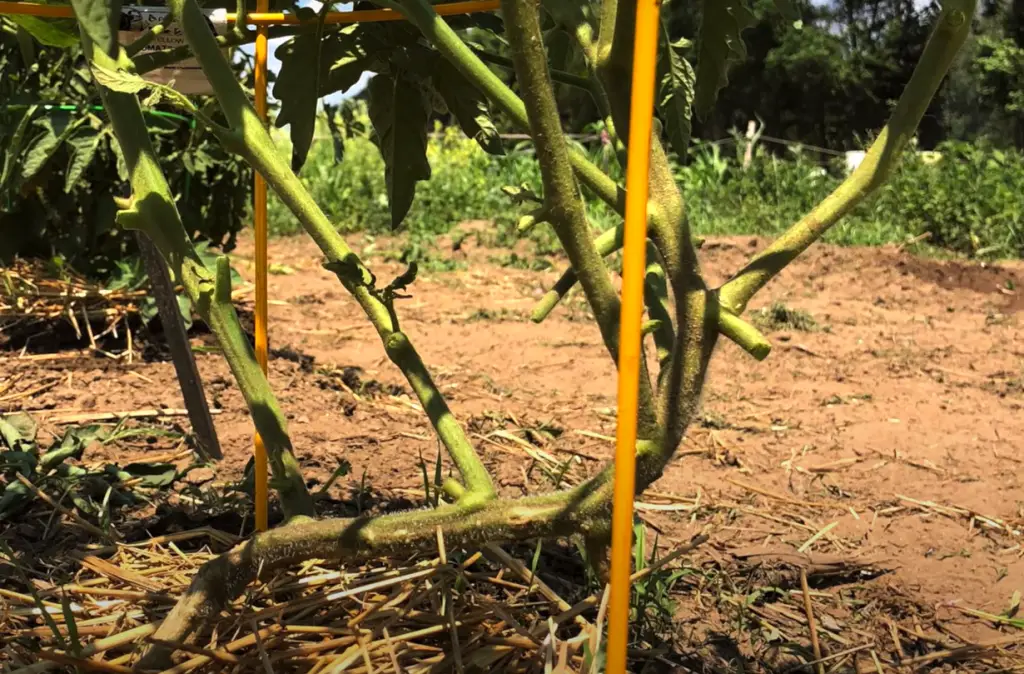
Nutrient deficiencies are another common reason for yellowing leaves on tomato plants. Nitrogen deficiency is usually indicated by pale green to yellow leaves with dark green veins across them. To address this, ensure your soil has enough nitrogen by adding fertilizer. Other nutrient deficiencies such as phosphorus and potassium can also cause yellowing leaves. [1]
Finally, yellowing leaves in tomato plants can indicate the presence of diseases. Fungal diseases such as early blight and leaf spot are often indicated by yellow or brown patches on the leaves, sometimes with concentric rings around them. To prevent these illnesses from spreading further, it is important to practice good garden hygiene (e.g., removing infected plants and debris) and use fungicides if necessary.
Soil Drainage and Irrigation for Healthy Tomato Plants
To ensure your tomato plants stay healthy, it’s crucial to have well-draining soil and to water them properly. Soil that does not drain well will cause waterlogged roots, which can lead to yellow leaves on tomato plants. Additionally, too little or too much water can stress your plants and encourage nutrient deficiencies that lead to yellowing foliage.
Also, it is recommended that you incorporate organic matter like compost into the soil before planting. This can help enhance moisture retention and air circulation.When it comes to watering, tomatoes prefer deep but infrequent irrigation at a rate of 1 to 1.5 inches per week in the hottest months of summer. Check your tomato plants’ soil moisture levels each week and water as needed, but avoid over watering as this can lead to yellow leaves on tomato plants. Use mulch around your tomatoes to help conserve soil moisture and reduce the need for frequent irrigation.
Finally, consider adjusting your watering schedule during times when temperatures are very warm or very cool, as well as during periods of heavy rainfall or drought. To ensure the health and happiness of your tomato plants, it may be necessary to make more precise adjustments to your watering schedule due to the changing weather conditions.
Controlling Fungal Diseases with Fungicides
Fungal diseases can be a possible cause of yellow leaves on tomato plants. Yellowing of the lower leaves and spots on them can be caused by fungal diseases such as early blight or late blight. If a fungal disease is the culprit behind your tomato plant’s yellow leaves, you may need to treat it with a fungicide.
When using a fungicide, make sure to choose one that is specifically made for treating tomatoes and also safe for use around food crops. You should also carefully read the instructions and follow all safety precautions while applying the fungicide. Make sure to cover all parts of the plant with an even coat; spraying at night when temperatures are cooler will help keep the fungicides from evaporating quickly in the heat. [2]
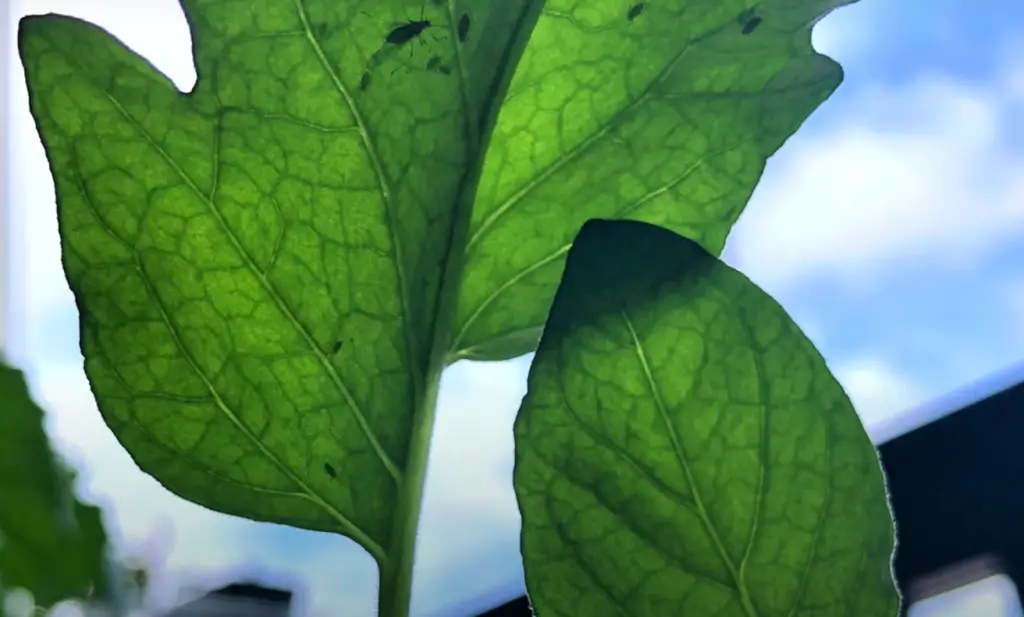
You may need to repeat the application of the fungicide several times to get rid of the fungal disease entirely. Make sure to give your tomato plants a few days in between applications to ensure they have time to absorb the spray and you are not overloading them with chemicals. Keeping an eye on your tomato plant’s leaves will help you accurately gauge whether or not your treatment is working.
Creating Balanced Nutritional Plans for Tomato Plants
When it comes to healthy tomatoes, a balanced nutrition plan is key. If your soil lacks essential nutrients, your tomato plants could become deficient and produce yellow leaves. To get the most out of your tomato crop, consider using supplemental fertilizers and soil amendments to improve nutrient availability in the soil.
Organic compost, manure, or mulch can be added as natural sources of nutrients for further improving the soil health. A fertilizer containing nitrogen, phosphorus and potassium (NPK) should also be incorporated into the soil before planting. This combination will help create an optimum balance for growing tomatoes that are not only juicy and delicious but also free of disease-causing pathogens.
Supplementing with Compost Tea to Improve Plant Health
Compost tea is a liquid solution made from compost and water. It can be used to boost the health of tomato plants, especially those with yellow leaves. Compost tea has many benefits for tomatoes, including increased nutrient availability, improved soil structure, improved disease resistance, and an overall healthier plant. To make compost tea, add one to two tablespoons of compost per gallon of water. Let it steep for 24-48 hours before use. Then simply pour the tea around the base of the tomato plant once every few weeks or so. This will give your tomato plants an extra dose of nutrition and help them stay healthy and vibrant throughout the season.
Additionally, adding organic matter such as compost or manure to your garden each year can help reduce yellow leaves on tomato plants. Improve the soil dramatically by mixing in several inches of organic material such as compost or manure with your existing garden soil. This will add valuable nutrients and beneficial microorganisms that can help improve the health of your tomato plants. Plus, it helps to retain moisture and reduce stress on the plants. Be sure to mix in these organic materials at least once a year for best results. [3]
Organic Remedies for Insects, Mites, and Other Pests
In addition to cultural and environmental management, gardeners can use organic remedies to prevent or reduce infestations of insects, mites, and other pests. These remedies may include companion planting (planting certain species near one another for pest control), introducing beneficial predators or parasites into the environment, the use of insecticidal soaps and oils, or applying organic pesticides such as BT (Bacillus thuringiensis). Again, it is important that gardeners research the specific insect or disease they are dealing with prior to using any remedy in order to ensure best results.
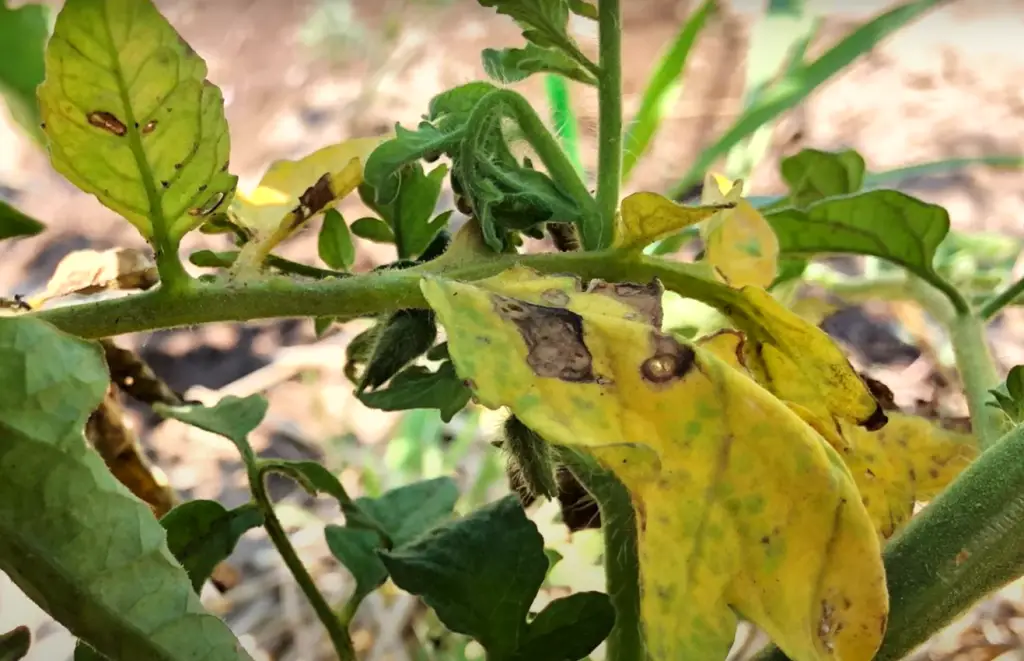
It is also worth noting that some of these remedies may not work on all tomato varieties. Therefore, seeking additional advice from a local gardener or extension service may be necessary. Finally, it is important to use caution when using any type of pesticide or insecticide, including organic products. Be sure to read the label and follow all safety instructions in order to reduce potential harm to yourself and your plants.
Native Plant Support Strategies
Although yellow leaves on tomato plants can be caused by several different issues, native plant support strategies are available to help. The best way to get the most out of your tomato plants is to use strategies that work with the environment rather than against it.
One important strategy for supporting native plants is mulching. Mulch helps retain soil moisture and blocks weeds from competing with the tomatoes for nutrients. Adding an organic material such as compost or aged manure can also provide valuable nutrients that tomatoes require for growth and health. [4]
In addition, intercropping – planting a variety of vegetables together – can also support native plant health in a couple of ways. First, intercropping provides more foliage which can provide shade and cool the ground around the tomatoes. Second, some companion plants such as marigolds are known to repel pests that could damage tomato plants.
When watering tomato plants, water deeply and infrequently – try to avoid frequent shallow sprinklings which can cause root rot or disease. Also consider using drip irrigation systems or soaker hoses to make sure that the right amount of water reaches the roots of your tomato plants instead of evaporating away.Finally, fertilizing and pruning are two additional strategies for helping keep native plant health high throughout the growing season. Fertilizers can help ensure that tomatoes get adequate nutrients while pruning can help remove infected, diseased, or dead plant material and keep the plant healthy.
By using native plant support strategies such as mulching, intercropping, watering deeply, fertilizing, and pruning, you can help to ensure that your tomato plants remain healthy and productive despite yellow leaves. With proper care and attention, your tomatoes should be able to enjoy a long and abundant growing season!
How Often Do You Water Tomatoes?
Watering tomato plants properly is an important step in preventing yellow leaves. Tomatoes need to be watered deeply and regularly, especially during hot or dry weather. Soaker hoses, drip irrigation systems, or a regular hose should be used to water tomatoes. Tomatoes should be watered once every 5-7 days at the base of the plant if there is no rain. In hotter climates, watering may have to occur more frequently— up to twice per week depending on conditions.
When watering tomatoes, make sure not to get water on the foliage as this can increase the risk of disease spread among plants and cause yellow leaves. During extreme heat waves, some gardeners also suggest lightly misting the foliage with a spray bottle for extra hydration and leaf protection. Additionally, it is important to remember that tomatoes prefer moist but not soggy soil. Too much water can also cause yellow leaves as the roots are unable to access oxygen and nutrients needed for healthy growth. [5]
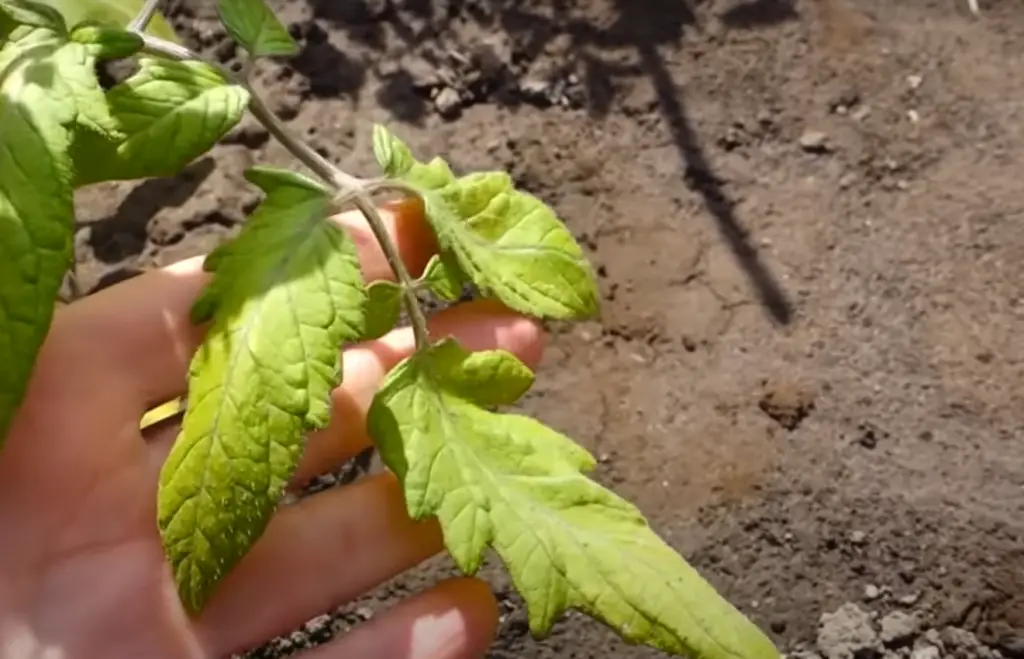
Finally, mulching around your tomato plants will help to keep moisture in the soil for longer periods of time and reduce evaporation so you may be able to lengthen the amount of time between watering. This will also help to suppress weeds which can compete with your tomatoes for available moisture and lead to yellow leaves.
Can Tomato Plants Recover From Overwatering?
Yes, tomato plants can recover from overwatering if the problem is identified and corrected quickly. The most important step you can take is to stop watering your plants more than necessary. If the soil remains damp for extended periods of time, it may be necessary to repot the plants in a fresh potting mix with better drainage.
It’s also important to make sure that any excess water around the roots is able to drain away as quickly as possible. You should also monitor the plant closely and ensure that it has access to adequate light, air circulation, and nutrients. If needed, prune off yellowed or damaged leaves in order to promote healthy growth. [6]
With proper care and attention, tomato plants can often recover from overwatering and return to good health. However, it’s important to recognize the signs of overwatering early on and take action quickly in order to avoid permanent damage or death of the plant.
In short, tomatoes can recover from overwatering if the problem is identified and corrected quickly.
With proper care and attention, tomato plants should be able to bounce back from overwatering and return to full health.How Long Do Tomatoes Take To Grow?
Tomatoes usually take 70 to 80 days to grow from seed to mature fruit, depending on the variety. Determinate varieties will take less time (about 60-70 days) and indeterminate varieties can take up to 90 or more days. During this time, your tomato plant needs plenty of water, warmth, sunlight, and nutrient-rich soil in order to thrive and produce fruits. Check the label of your tomato variety for exact instructions on when you should expect the tomatoes to be ready for harvest.
Keep an eye on the leaves of your tomato plant as it grows. Leaves that are turning yellow could indicate a problem such as too much or too little water, lack of nutrients, or some other environmental stressor such as too much heat or cold. If the yellow leaves persist, it could be an indication that something more serious is going on and you should take steps to remedy the problem before it affects your crop. [7]
How Do You Trim Tomato Plants?
Trimming your tomato plants is an important part of keeping them healthy. When pruning your tomato plant, make sure to use a sharp pair of scissors or pruning shears and cut just above the leaves and stems. Be careful not to damage the remaining foliage or fruit as this can cause blossom-end rot or other problems.
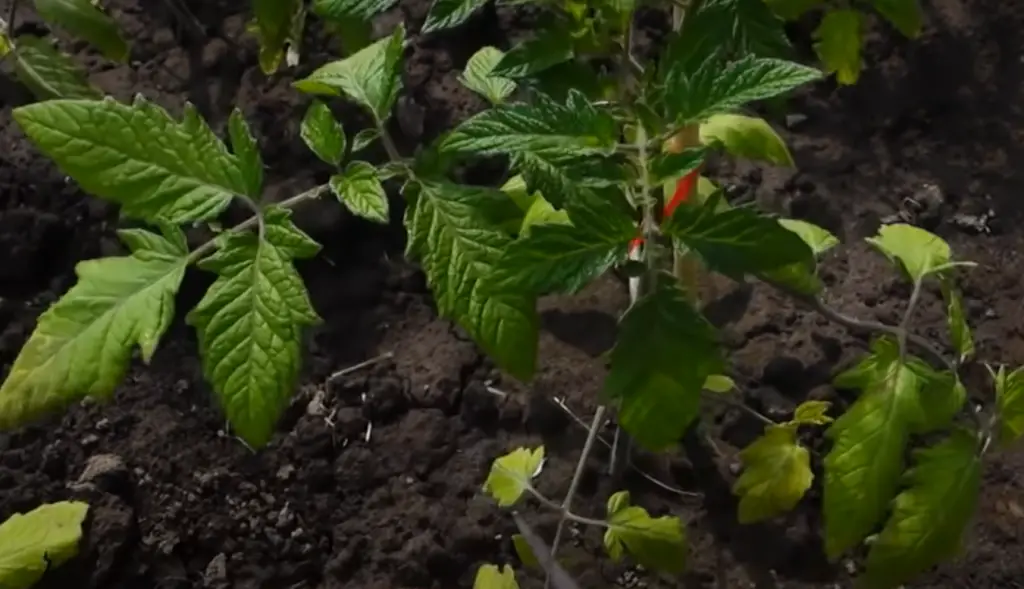
To remove excess foliage, you should start at the top of the plant and work down. Pruning also helps promote airflow around the plant and keeps it from becoming too crowded with foliage.
Additionally, removing lower leaves that are yellowing will help keep diseases from spreading throughout the plant.
Finally, you may want to consider adding some form of support for your tomatoes such as cages or stakes so they won’t flop over as they get heavier. This will help keep them upright and out of the dirt, which can promote healthier tomatoes.
How Do You Stop Blossom End Rot On Tomatoes?
Blossom-end rot (BER) is a common disorder of tomato plants that results in dark, leathery lesions at the blossom end of the fruit. It is caused by a lack of calcium in the plant tissue and is often exacerbated by environmental stresses such as irregular watering or high temperatures. In order to prevent BER, it’s important to ensure that your tomato plants have adequate access to calcium and other essential nutrients.
To start, make sure that your soil has an optimal pH level between 6.2 and 6.8 for tomatoes to properly absorb calcium from the soil. If you are using containers or raised beds, mix lime into the soil before planting to increase its calcium levels or use a fertilizer with added calcium. If you are growing tomatoes in the ground, spread a thin layer of lime over the soil before planting and mix it into the top few inches.
Monitor your plants’ water levels to avoid inconsistent hydration. When tomato plants experience long dry periods followed by heavy rains or over-watering, their cells cannot absorb nutrients from the soil quickly enough and they become nutrient deficient. Try to keep the soil moist but not soggy and water on a regular schedule. Mulching is also helpful for maintaining consistent moisture levels in the soil.
Finally, if blossom end rot does occur you can help alleviate its effects with foliar sprays of calcium chloride or other calcium sources to increase available nutrients in the plant tissue directly. [8]
What to Avoid When Growing Tomatoes?
Tomatoes are a nutritious and delicious addition to any garden. However, they require special care and attention in order to ensure that they remain healthy and productive.
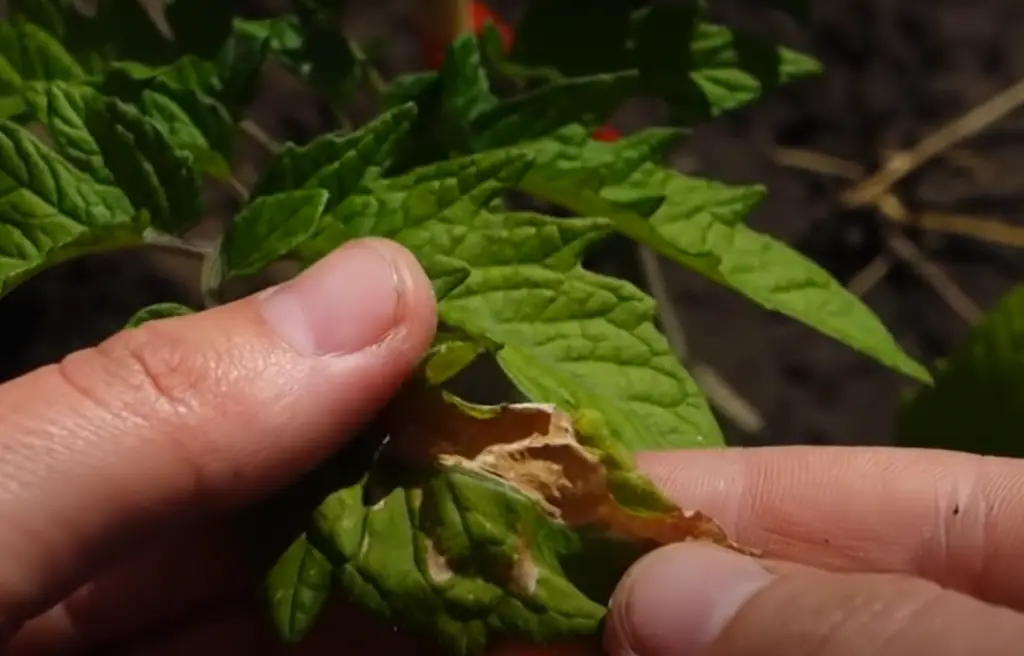
Unfortunately, a common problem in tomato plants is the presence of yellow leaves which can indicate nutrient deficiencies or other issues. In order to prevent this from happening, there are certain actions you should avoid when growing tomatoes:
- Overwatering – Too much water can lead to root rot and may increase the chance of fungal infections such as blight or early blight. Allow the soil around your plants enough time to dry out between waterings.
- Poor Soil Quality – Ensure that your soil has enough organic matter and adequate nutrition for your plants by regularly fertilizing them.
- Too Much Shade – Tomatoes need plenty of sunlight in order to thrive, so be sure to plant them in an area where they can get at least 8 hours of direct sunlight per day.
- Crowding – Planting your tomatoes too close together will cause competition for nutrients and water which can lead to stunted growth or yellow leaves on the plants. Ensure that each tomato has enough space between it and its neighbors.
- Using Old Seeds – This is especially important when planting heirloom varieties as the seeds may not germinate or produce viable fruit if they are too old. Look for fresh, organic non-GMO seeds whenever possible.
By avoiding these common mistakes when growing tomatoes, you can ensure that your plants remain healthy and productive. With the proper care, your tomato plants will be able to thrive in your garden for many years to come.
FAQ
How do you fix yellow leaves on tomato plants?
The most important step in fixing yellow leaves on tomato plants is to identify the cause. Several factors can lead to yellow leaves, such as nutrient deficiencies, improper watering, soil pH issues, pests or disease. Once you have identified the issue then you can take steps to fix it. For example, if the plant has a nutrient deficiency then fertilize appropriate according to instructions on the bag. If there is an issue with watering then check and adjust your irrigation schedule accordingly. And if there is a pest problem then use an insecticide and other methods of prevention like crop rotation or good sanitation practices. Each situation will require different solutions so it is important to get to the root of the problem first before attempting any fixes. Once you have addressed the underlying cause then you can expect yellow leaves to improve.
Are yellow leaves on tomato plants bad?
Yellow leaves on tomato plants can be a sign of a problem, but not necessarily a bad thing. If the cause is identified early and addressed properly then it is likely that your plant will recover without any lasting damage. However, if left unchecked or misdiagnosed then yellowing leaves can lead to more serious problems such as stunted growth or disease which can eventually kill the plant. Therefore, it’s important to monitor your plants regularly and take steps to address any issues promptly.
What causes yellow leaves on tomato plants?
There are several possible causes for yellow leaves on tomato plants including nutrient deficiencies, improper watering, soil pH issues, pest infestations or disease. It is important to identify the underlying cause before attempting any fixes so that you can take the appropriate measures to remedy it.
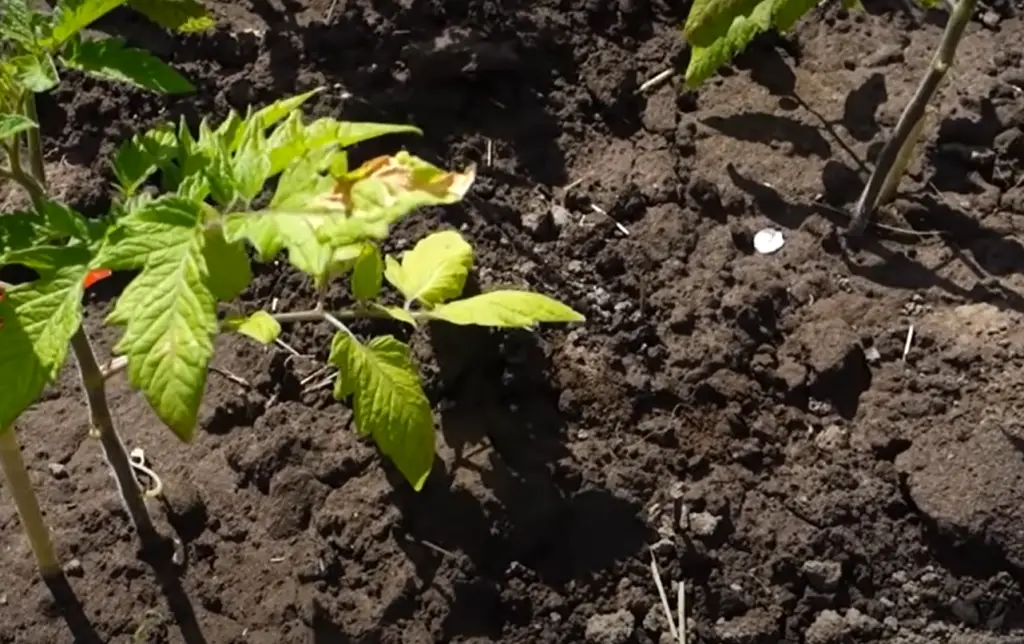
For instance, if the issue is related to nutrient deficiencies then fertilize appropriately according to instructions on the bag. If there is an issue with watering then check and adjust your irrigation schedule accordingly. And if there are pests present then use an insecticide and other methods of prevention like crop rotation or good sanitation practices.
Can yellow leaves on tomato plants be prevented?
Yes, many cases of yellow leaves on tomato plants can be prevented by following a few simple steps. Ensuring adequate drainage in your soil, monitoring for signs of stress and using fertilizer as needed will all help keep your plants healthy. Additionally, practicing good crop rotation and sanitation techniques can help ward off disease and pest infestations that can lead to yellowing leaves. Regularly checking the soil pH and paying attention to irrigation needs will further reduce the chances of yellow leaves on tomato plants.
Should you remove yellow leaves from tomato plants?
The answer depends on the cause of the yellowing.Yellow leaves can be caused by age, nutrient deficiency or disease. Generally speaking, it’s not a good idea to remove healthy green leaves from tomato plants as they are essential for photosynthesis. If the yellowing is due to age, there’s nothing wrong with removing them in order to keep your plant looking attractive. They won’t contribute any more to growth and won’t help ripen fruit either. Nutrient deficiencies often show up first as yellowed leaves on younger tomato plants so if you notice this symptom it might be worth testing your soil and adding fertilizers accordingly. Keep an eye out for other signs of nutrient deficiency such as stunted growth or blotchy leaves.
Useful Video: LEAVES YELLOW IN TOMATOES? EVERYTHING IS FIXED IN THE MOMENT
Conclusion
To wrap up, yellow leaves on tomato plants can be a sign of many different problems. It is important to identify the cause of yellowing in order to deal with it properly. Issues like nutrient imbalance, disease or pest infestation should be treated differently. In general, providing adequate water and sunlight will help keep tomato plants healthy and promote lush green foliage. Also, monitoring your tomatoes regularly for pests and diseases is important to prevent larger issues from occurring. With these steps in mind, you’ll be able to enjoy a productive garden season!
References:
- https://www.thespruce.com/yellow-leaves-on-tomatoes-5211055
- https://www.allaboutgardening.com/tomato-leaves-turning-yellow/
- https://www.tomatobible.com/yellow-tomato-leaves/
- https://www.gardendesign.com/tomato/leaves-turning-yellow.html
- https://www.gardenerbasics.com/blog/yellow-leaves-on-tomato-plants
- https://www.southernliving.com/garden/edible/tomato-plant-leaves-turning-yellow
- https://agrilifetoday.tamu.edu/2021/04/19/why-are-my-tomato-leaves-turning-yellow/
- https://growfully.com/tomato-plant-leaves-turning-yellow/





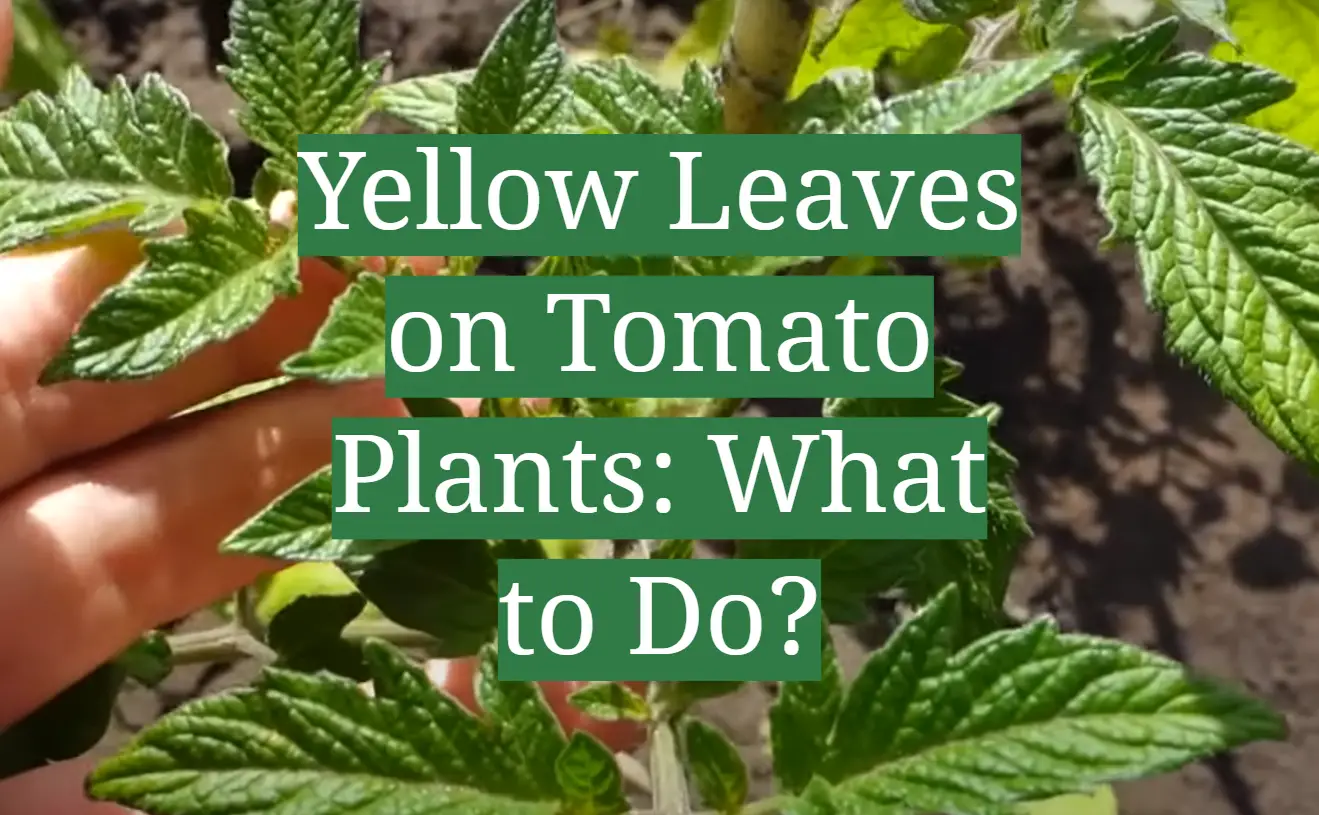


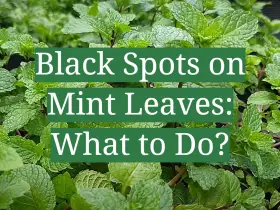
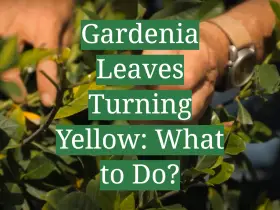
Leave a Reply
View Comments